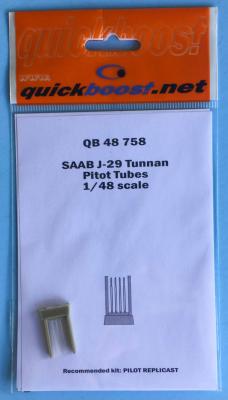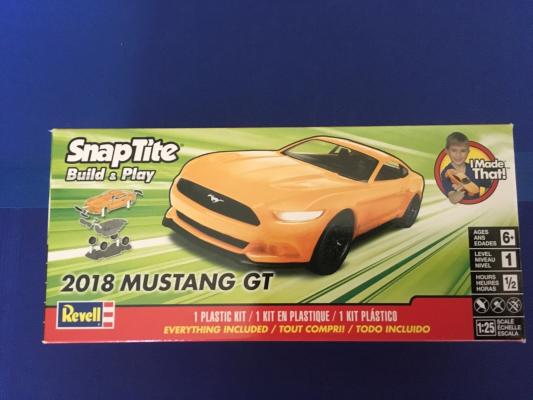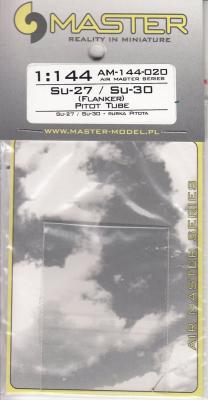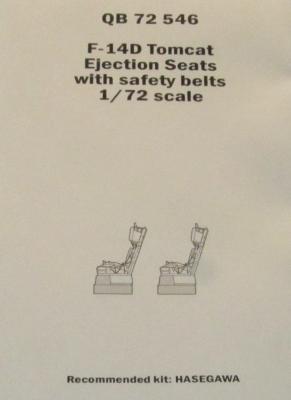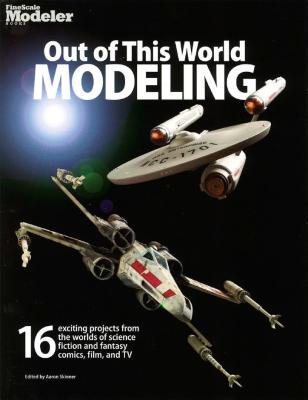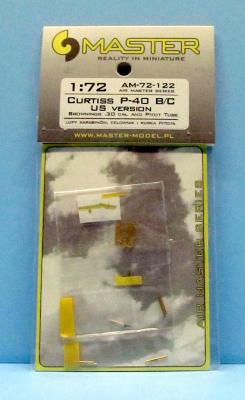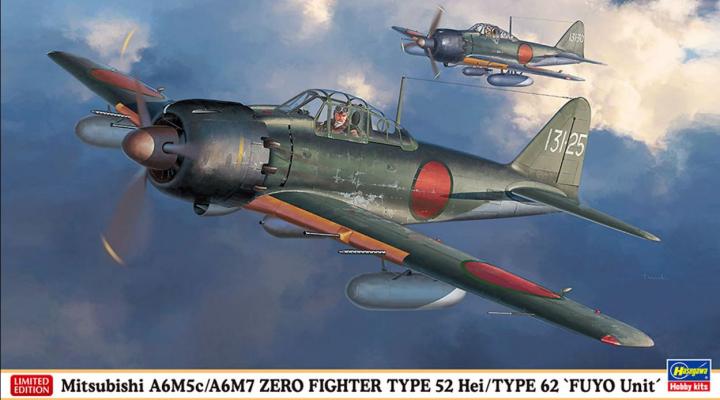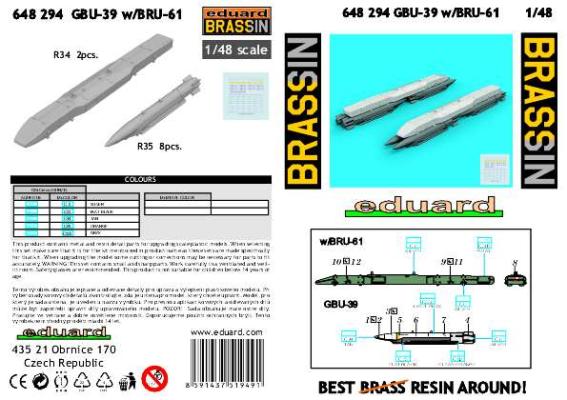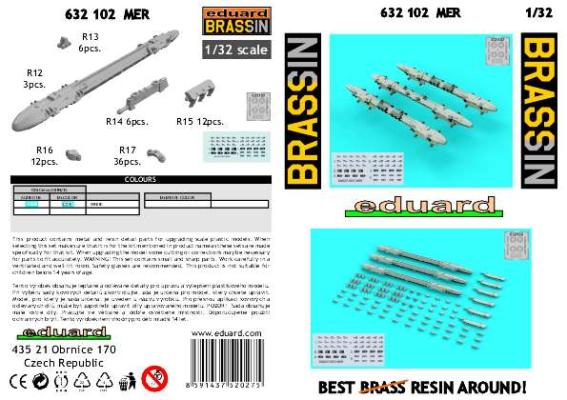Want an easy upgrade to any 1/48 Saab J 29 Tunnan? Step right up to the new Quickboost Saab J 29 Tunnan pitot tube set that provides a beautiful replacement to what is supplied in the kit. The parts are packaged in the standard Quickboost re-closable packaging with a paper stiffener along with the description card. These parts are specific to fit the Pilot Replicas accurate and highly detailed 1/48 Saab J 29F injected plastic kit and an Austrian J 29F variant that basically obsoleted any previous 1/48 kits. They will also work for the older Neomega resin kit, the AZ Models, and the Hobby Boss kits. You may need to shorten the length of the pitot tube for the Hobby Boss kit since its smaller than the claimed 1/48 scale.
What's New
Sometimes experienced modelers get so bogged down with the extensive projects we are working on, we forget to lift our over-taxed heads from the work bench, remove glasses and opti-visors, and smell the sweet success of a quick, easy build. So, while browsing the IPMS review list one day, I came upon this kit and “snapped” it up. My thought was to have my wife build it, but she took off in our (real) ’65 rag top Mustang instead, and left me to it.
The Revell Snap-Tite 2018 Mustang GT is a nice representation of the styling changes being made to the existing 2017 Mustang. The car will soon to be released this Fall. The main omission on the Snap-Tite model are the rear vision door mirrors.
Master Model of Poland produces small brass parts for detailing models, be they aircraft or ships. They have parts for aircraft in 1/32, 1/35, 1/48, 1/72, and 1/144, mostly pitot tubes, refueling probes and gun barrels.
The pitot part is a very fine piece of brass. The piece is much finer than the kit part.
I have somehow missed building a 1/144 Su-27 Flanker. This is a real oversight, as in the past I have built two Flankers in 1/72 for reviews. I really like the “back story” on the Ethiopian Flanker. The story of the woman pilot shooting down a MiG-29 with a Flanker is just too good to be true.
The F-14 Tomcat was the Navy's best long range interceptor, but it is now retired. It was built by Grumman and was their last and best “cat” that they ever made. The primary job of the F-14 was fleet defense and it did this with a mix of missiles; the long range Phoenix, the mid-range Sparrow and with the short range Sidewinder. It could even use its 20mm Vulcan cannon for close in work. The last Tomcat, the F-14D, which this review is about, had new F110 engines with digital avionics and new ejections seats as well. That being the Martin Baker SUJ-17 NACES ( Navy Aircrew Common Ejection Seat).
Aaron Skinner started out early in publishing, founding his High School student newspaper in the early eighties. He has been an avid modeler since the age of six (supported by his grandfather). He graduated from The University of Queensland in 1992 with his degree in Journalism and History. He has worked with several newspapers in Arkansas and Texas as a photographer and reporter from 1994 until in joined Fine Scale Modeler in 2006. He was promoted from Associate Editor to Senior Editor in 2015 and has authored several modeling books, including: Essential Skills for Scale Modelers (2011), Modeling Airliners (2012), and Airbrushing for Scale Modelers (2015). He is active representing Fine Scale Modeler and providing presentations at contests and shows, recently returning to Dallas for Squadron’s EagleQuest in June 2017.
There are many firms who make and market brass aircraft accessories for the modeler, but none seem to match the skill and delicacy that is routinely exhibited by Master Model from Poland. One of the latest gems is the set for the Curtiss P-40 B/C US version in 1/72 scale. In this set one gets the following: four .30 cal MG barrels for the wings, two .50 cal cowling blast tubes, one pitot tube, two resin pitot heads, one front bead sight, and four photoetch rear ring sights. Master-Model does not recommend any one P-40 kit so for this review, so I used the latest Airfix kit the Curtiss Hawk 81-A-2 which I had.
The Mitsubishi A6M7 Type 0, according to Wikipedia, is based on the A6M6, which in turn is based on the A6M5c. The bottom line for this variant of the venerable Zero is that it was designed for a role as a fighter bomber. It was fitted with 3 - 13.2mm Machine guns (1 in the fuselage and 2 wing mounted) as well as 2 wing mounted 20mm canons. Additionally, it has hard points to carry various combinations of external bombs and or external fuel tanks.
One of the great things I have always found about modeling is that I never fail to learn something here and there. This set of the GBU-39 and the BRU-61 bomb rack caught my attention as, frankly, I had never heard of it. A quick Google and I was hooked and volunteered to review the set.
The GBU-39 Small Diameter Bomb is just that, a smaller 250 lb. weapon which is a precision guided glide bomb. Its intent is to allow aircraft to carry more weapons and destroy more targets. Think of it this way, a plane has four pylons for example. At a bomb per pylon, that’s four total. Using adapters, at two bombs per pylon, eight targets can be destroyed. Using the GBU-39 with BRU-61 rack, the plane can carry sixteen bombs and destroy sixteen targets. Adding to that, the effective range of this weapon is over 50 miles and it can use multiple targeting systems. To get that long distance, it deploys wings to allow a glide range of over 50 miles. Interesting stuff.
The MER (Multiple Ejector Rack) is a weapons unit which attaches to an aircraft pylon and can hold up to six individual weapons such cluster bombs or standard dumb bombs. The US Air Force stopped using these in the early 1990’s but many pictures can be found with these attached to B-52’s, F-4’s, A-4’s, F-105’s, etc. In other words, they were used frequently. Many model kits have a simplified version of this but Eduard has upped the game with this release in 1/32nd scale.
Eduard set comes with three complete MER’s and a total of 78 cast resin parts in their usual gray resin. There is also some wire to add for the connections also and a full set of markings to go with each one.
Without question, the F-14 was the Navy's finest long range interceptor ever built. Now retired, the Grumman built F-14 was the best of all Grumman “cats”. It had firepower, speed and presence with its wings fully swept forward or aft. The F-14 job was fleet defense and it used the long range Phoenix, mid-range Sparrow and the short range Sidewinder to accomplish this task, it even had a 20mm Vulcan cannon as a back up. The F-14 came in three variants; the F-14A, the F-14B and lastly the F-14D. The ejection seats used the A and B marks was the Martin Baker GRU-7A. Quickboost has recently made and offers a resin pair of these seats and they are recommended for the Hasegawa kits. These seats are finely cast with no flash or holes.

